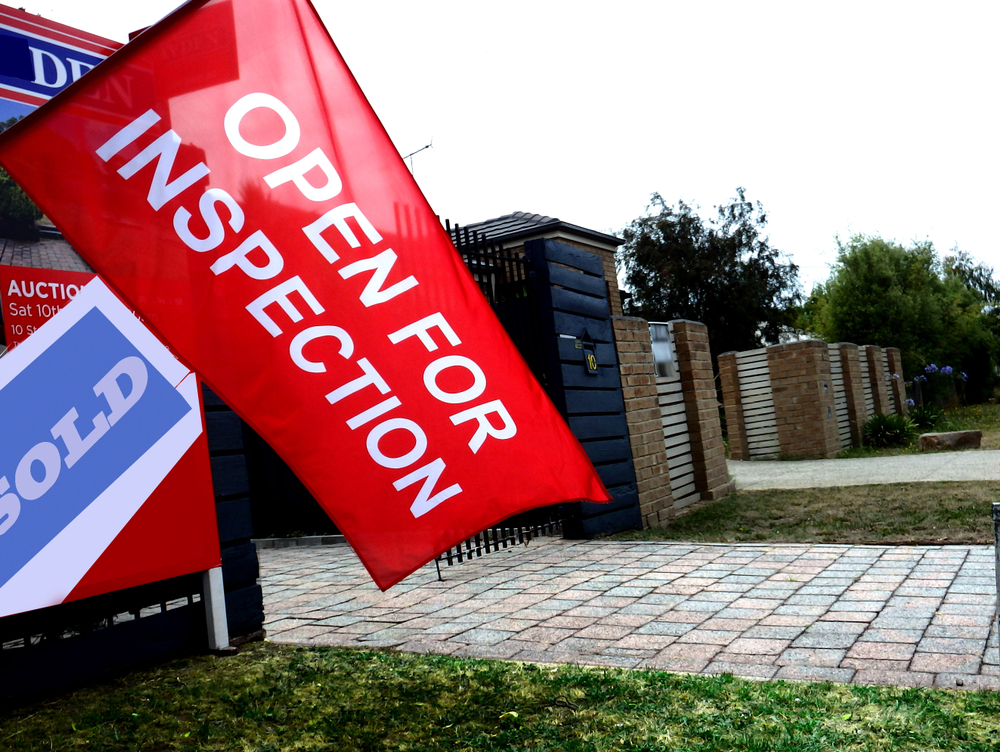Real-Estate Scions Are Breaking a Cardinal Rule: Never Sell
The office-market downturn is forcing some of the city’s multigenerational families to make emotionally fraught decisions
William Rudin, scion of one of New York City’s premier real-estate dynasties, says his grandfather built a property empire by following a cardinal rule: Never sell.
While the city’s office market wobbled during economic downturns, values and cash flows would always recover because workers came back during good times.
But last year, Rudin sold control of a 30-storey office tower in downtown Manhattan his family developed in the 1960s. This fall, the family agreed to part with 80 Pine Street, another financial district tower, after anchor tenant American International Group left.
“The world has changed,” said Rudin, the 69-year-old co-executive chairman of his family’s firm. “We have to take a cold hard look at our business in order to make sure there’s a foundation for the next generation.”
The office market’s severe downturn is forcing some of the city’s multi-generational family owners to do something they managed to avoid during world wars, financial meltdowns and a global pandemic: sell their core properties.
Families like the Rudins and the Kaufmans built their New York empires by passing these buildings from one generation to the next. The office properties steadily rose in value and provided a comfortable living for an expanding number of children, grandchildren, nieces and nephews.
“We and the other families did not sell,” said Jonathan Iger, chief executive of Sage Realty, the management firm running the 100-year-old Kaufman real-estate business founded by his great grandfather. “You see yourself through the dips and you come out—not just fine, but more than fine.”

Today, U.S. office vacancies are near record levels and demand looks permanently impaired by remote work and by companies doing more with less space. Properties that had been reliable cash cows now require substantial upgrades or other capital infusions to replace departing or shrinking tenants.
For many families in their third and fourth generation of ownership, it makes more sense to sell for whatever they can get. The Kaufman family agreed to sell a downtown office tower this year and are marketing another one in Midtown. Like others, the Kaufmans are selling the family jewels at values significantly below what they were five years ago.
Tracking the precise number of sales by these families is tricky. But real-estate investment banking firm Eastdil Secured says that New York real-estate families have sold about 10 office buildings over the past 24 months. In the previous decade there were fewer than five such deals.
“Instead of 50 different aunts and uncles getting distributions, they’re getting capital calls,” said Gary Phillips , an Eastdil managing director.
Individuals and small private owners have stakes in about one third of the 350,000 office properties tracked by data firm CoStar Group. The decision by a number of families to sell is part of a natural evolution under way in New York and other big cities.

Often the buyers are large developers or investment firms with the deep pockets to convert these buildings into other types of properties more in demand, especially rental apartments.
“Many landlords are going through this process,” said Michael Cohen, the patriarch of one of three New York families that led a sale of a Madison Avenue office building this year. The new owner plans to demolish it and convert the property to a different use.
These can be emotionally fraught decisions. Over the decades, more family members have gained a stake in the properties. They often have widely varying financial needs or incentives.
Tensions between family members who want to hold and those who want to sell have always simmered in the background. Today’s tough times have intensified these battles.

When values and profits are rising, “it’s harder to make a case to sell. Now there’s a sense of: ‘Wait a second. We’re not seeing improvement,’” said Peter Boumgarden, director of the Koch Center for Family Enterprise at Washington University in St. Louis.
New York City dynasties have played a major role in real-estate growth since the late 1800s. Many of the early family members were European immigrants who started real-estate companies that their children and grandchildren grew into empires. The Dursts, Milsteins and Trumps are among the New York families to shape the cityscape.
Families were able to hold on to their buildings by following low-debt strategies, which insulated them from market downturns and positioned them to profit when markets recovered.
Lately, some office markets are showing a few positive signs, as bosses call workers back to the office. But the buildings that stand to benefit are new ones or those in top-tier locations, like Rockefeller Center, that have gone through extensive upgrades. Tenants are moving to those amenity-laden spaces to give their employees more of an incentive to put up with lengthy commutes.
Many of New York’s real-estate families own older buildings in less desirable locations, offering few of the special features that attract tenants. They also have large vacancies that are costly to fill these days. Landlords feel the need to offer free rent and spend heavily on new interiors to compete.
“There’s little incentive for landlords to make a significant contribution,” said Stephen Siegel, chairman of global brokerage for real-estate services firm CBRE Group . “It’s money in and really no money out.”
Even with recent sales, the Rudins are keeping most of their office portfolio, which includes 14 other New York buildings. So are the Kaufmans. Some families are even making big investments in their aging office buildings, betting that they will be among the winners.
The Gural family last year led a group that agreed to invest new equity into the DuMont Building, on Madison Avenue, which the family has controlled for over 60 years. Partners who were used to getting disbursements from the property had to reach into their pockets to pay their share for capital improvements and paying down debt.
“It’s called a capital call, which is the most dreaded term in our industry,” said Jeffrey Gural , chairman of GFP Real Estate, which manages the family’s properties.
But the decision paid off. By putting in fresh money, the partners were able to negotiate a loan extension with the building’s creditors and attract tenants.
“I have yet to sell a building where I didn’t regret selling,” Gural said.
Yet other families are choosing to walk away from properties—even if they reinvested in them. The Rudins recently spent $100 million on renovations at 80 Pine’s lobby and building systems, adding a terrace and dining room. Now, William Rudin considers forking over any additional money a waste.
“Even if we spent money to fix up the building, the ceilings are too low, there are a lot of columns, the floors are too big,” he said. “It became clear to us we needed to stop putting capital back into the building.”
It was a gut-wrenching decision, letting go of what amounted to a family heirloom.
“When I go by 80 Pine Street, I remember the good times and I remember the bad times,” Rudin said. “But you’ve got to move on.”
 Copyright 2020, Dow Jones & Company, Inc. All Rights Reserved Worldwide. LEARN MORE
Copyright 2020, Dow Jones & Company, Inc. All Rights Reserved Worldwide. LEARN MORE
A divide has opened in the tech job market between those with artificial-intelligence skills and everyone else.
A 30-metre masterpiece unveiled in Monaco brings Lamborghini’s supercar drama to the high seas, powered by 7,600 horsepower and unmistakable Italian design.
Buyer demand, seller confidence and the First Home Guarantee Scheme are setting up a frantic spring, with activity likely to run through Christmas.
The spring property market is shaping up as the most active in recent memory, according to property experts Two Red Shoes.
Mortgage brokers Rebecca Jarrett-Dalton and Brett Sutton point to a potent mix of pent-up buyer demand, robust seller confidence and the First Home Guarantee Scheme as catalysts for a sustained run.
“We’re seeing an unprecedented level of activity, with high auction numbers already a clear indicator of the market’s trajectory,” said Sutton. “Last week, Sydney saw its second-highest number of auctions for the year. This kind of volume, even before the new First Home Guarantee Scheme (FHGS) changes take effect, signals a powerful market run.”
Rebecca Jarrett-Dalton added a note of caution. “While inquiries are at an all-time high, the big question is whether we will have enough stock to meet this demand. The market is incredibly hot, and this could lead to a highly competitive environment for buyers, with many homes selling for hundreds of thousands above their reserve.”
“With listings not keeping pace with buyer demand, buyers are needing to compromise faster and bid harder.”
Two Red Shoes identifies several spring trends. The First Home Guarantee Scheme is expected to unlock a wave of first-time buyers by enabling eligible purchasers to enter with deposits as low as 5 per cent. The firm notes this supports entry and reduces rent leakage, but it is a demand-side fix that risks pushing prices higher around the relevant caps.
Buyer behaviour is shifting toward flexibility. With competition intense, purchasers are prioritising what they can afford over ideal suburb or land size. Two Red Shoes expects the common first-home target price to rise to between $1 and $1.2 million over the next six months.
Affordable corridors are drawing attention. The team highlights Hawkesbury, Claremont Meadows and growth areas such as Austral, with Glenbrook in the Lower Blue Mountains posting standout results. Preliminary Sydney auction clearance rates are holding above 70 per cent despite increased listings, underscoring the depth of demand.
The heat is not without friction. Reports of gazumping have risen, including instances where contract statements were withheld while agents continued to receive offers, reflecting the pressure on buyers in fast-moving campaigns.
Rates are steady, yet some banks are quietly trimming variable and fixed products. Many borrowers are maintaining higher repayments to accelerate principal reduction. “We’re also seeing a strong trend in rent-vesting, where owner-occupiers are investing in a property with the eventual goal of moving into it,” said Jarrett-Dalton.
“This is a smart strategy for safeguarding one’s future in this competitive market, where all signs point to an exceptionally busy and action-packed season.”
Two Red Shoes expects momentum to carry through the holiday period and into the new year, with competition remaining elevated while stock lags demand.
A luxury lifestyle might cost more than it used to, but how does it compare with cities around the world?
A 30-metre masterpiece unveiled in Monaco brings Lamborghini’s supercar drama to the high seas, powered by 7,600 horsepower and unmistakable Italian design.























